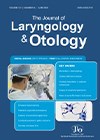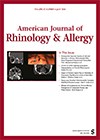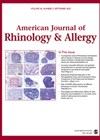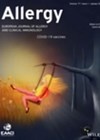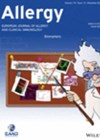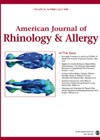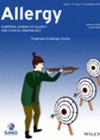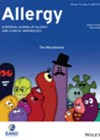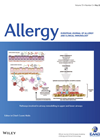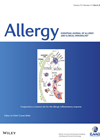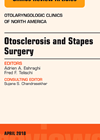
Journal Reviews
A systematic review of adjunctive probiotic therapy in the management of chronic rhinosinusitis
It is generally understood that administering substances containing live microbiologically active micro-organisms (probiotics) enhances the treatment of chronic rhinosinusitis. Probiotics manipulate and rebalance the alterations occurring in the local microbiome in chronic rhinosinusitis patients. This results in propagation of healthy...
A new treatment for chronic rhinitis
The review paper looks at the efficacy of cryoablation of the posterior nasal nerve (PNN) to treat chronic rhinitis, an increasingly popular method of treating a highly prevalent and morbidity-inducing disease. Five studies were included in the meta-analysis, all dating...
Does pollution worsen inflammatory nasal problems?
This ambitious study, conducted over a period of four years, assessed 27,863 patients and compared levels of allergic rhinitis (AR) or chronic rhinosinusitis (CRS) with the levels of air pollution recorded, as assessed by levels of particulate matter (PM10). They...
Eosinophilic or not eosinophilic: dupilumab seems to work
Chronic rhinosinusitis with nasal polyps (CRSwNP) is a type 2 inflammation with interleukin (IL)-4, IL-13, and IL-5. Tissue eosinophilia in nasal polyps dramatically increased over a 10-20-year period. Classification of the severity of eosinophil status is expected to lead to...
One airway, one disease - not for everyone!
While 85% of asthmatic patients have rhinitis, only 20-30% with rhinitis have asthma. Together with atopic dermatitis (AD), rhinitis and asthma form a triad that tend to co-exist in patients (multimorbidity). This co-existence raises the possibility of genetic mechanism. Authors...
Prevention better than cure?
This systematic review looks at methods of ‘barrier protection’ or ‘barrier-enforcing’ to minimise allergic rhinitis symptoms, using 15 RCTs. Whilst the authors admit that patient numbers were small in a number of these studies, generally it seems that barrier techniques...
Allergic rhinitis, the usual suspects
Allergic rhinitis (AR) is characterised by allergen binding to IgE on mast cells and basophils and subsequent histamine, prostaglandine D2 (PGD2) and cysteinyl leukotrienes (cysLTs) release causing early-phase response. This is followed by late-phase response mediated by eosinophils. Other cells,...
Chronic rhinitis endotypes
Chronic rhinitis (CR) is common with up to 30% of the population affected, with a significant impact on quality of life. CR includes several phenotypes with different pathogenesis including allergy, autoimmune, age, occupation, pregnancy, neurogenic and drugs. Such variation means...
A trial of house dust mite sublingual tablet in children with allergic rhinitis
The house dust mite (HDM) is one of the commonest causative agents in allergic rhinitis (AR), affecting patients across all demographics. Recently, sublingual immunotherapy (SLIT) has been shown in clinical trials and meta-analysis to be effective compared to placebo in...
Is non-allergic rhinitis as bad as allergic?
Non-allergic rhinitis (NAR) occurs when rhinitis symptoms are not associated with allergic, infective or anatomical reason. It is responsible for almost half of all cases of rhinitis and affects around 300 million worldwide. Assessing NAR patients’ quality of life (QoL)...
Puberty and rhinitis
While asthma and rhinitis are more common in boys compared to girls in childhood, whether this trend persists after puberty or not is not yet clear. Authors inspected the European Commission funded MeDALL (Mechanisms of the Development of ALLergy) to...
Advances in diagnosis and management of allergic rhinitis
This article reviews advances in the diagnosis and management of allergic rhinitis. Recent advances in the diagnosis of allergic rhinitis include testing of local immunoglobulin E (IgE), urinary test to diagnose aspirin hypersensitivity and optical rhinometry to assess degree of...

